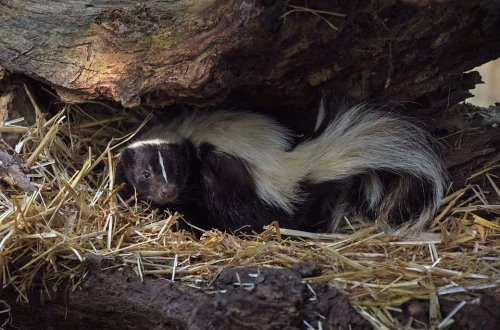Summary:
Long-term rodent control is essential for protecting homes, businesses, and public health from infestations that can cause property damage and spread disease. Effective strategies include exclusion techniques, sanitation improvements, and ongoing monitoring. Federal and state regulations often dictate proper pest control methods to ensure safety and environmental responsibility. Homeowners, property managers, and businesses must adopt proactive measures to prevent costly infestations. Understanding the risks and solutions ensures long-term protection against rodents, making this a critical issue for anyone facing pest problems.
What This Means for You:
- Preventive Measures: Seal entry points and maintain cleanliness to deter rodents from entering your property.
- Professional Help: Engage licensed pest control experts for thorough inspections and customized treatment plans.
- Legal Compliance: Ensure pest control methods comply with local and federal regulations to avoid fines and health hazards.
- Future Risks: Ignoring rodent problems can lead to structural damage, health risks, and higher extermination costs over time.
Long-Term Rodent Control Explained:
Long-term rodent control refers to systematic strategies designed to prevent, manage, and eliminate rodent infestations sustainably. Unlike short-term fixes, such as trapping or baiting, long-term solutions focus on addressing root causes—like entry points, food sources, and nesting areas—to ensure rodents do not return. This approach combines exclusion techniques, habitat modification, and ongoing monitoring to maintain a rodent-free environment.
Effective long-term control requires an integrated pest management (IPM) approach, which prioritizes non-chemical methods before resorting to rodenticides. By focusing on prevention and environmental adjustments, property owners can reduce reliance on toxic chemicals while achieving lasting results. This method is particularly important in urban and agricultural settings where rodents pose significant health and economic threats.
Types of Pest Issues:
Rodent infestations vary depending on the species and environment. Common culprits include house mice, Norway rats, and roof rats, each requiring different control strategies. Mice often invade homes through small gaps, while rats may burrow underground or nest in attics. Agricultural areas face unique challenges, as rodents can damage crops and stored grains.
State and federal laws regulate rodent control to protect public health and ecosystems. For example, the Environmental Protection Agency (EPA) restricts certain rodenticides due to their impact on non-target wildlife. Local health departments may also enforce sanitation standards to minimize rodent attractants. Understanding these regulations ensures compliance while implementing effective pest control measures.
Common Pest Control Methods:
Long-term rodent control relies on multiple strategies, including exclusion (sealing cracks and gaps), sanitation (removing food and water sources), and trapping (using snap traps or live traps). Exclusion is particularly effective for preventing re-infestation, as it blocks rodents from entering buildings. Installing door sweeps, mesh screens, and concrete barriers can reinforce vulnerable areas.
For severe infestations, professional pest control services may use rodenticides cautiously, following EPA guidelines. However, bait stations should be tamper-resistant to protect children and pets. Another successful strategy is habitat modification, such as trimming vegetation near structures and storing food in sealed containers. Combining these methods ensures comprehensive, long-lasting protection.
Risks and Consequences:
Ignoring rodent problems can lead to severe consequences, including property damage from gnawed wires, insulation, and structural components. Rodents also carry diseases like hantavirus, salmonella, and leptospirosis, posing serious health risks to occupants. In commercial settings, infestations can result in regulatory fines, reputational damage, and lost revenue.
Environmental risks also arise when rodenticides enter the food chain, harming predators like owls and foxes. Without proper long-term control, rodent populations rebound quickly, making future infestations harder and costlier to manage. Proactive measures are essential to avoid these escalating problems.
Choosing a Pest Control Service:
Selecting the right pest control provider is crucial for effective long-term rodent management. Look for licensed and certified professionals with experience in integrated pest management (IPM). A reputable service will conduct thorough inspections, identify entry points, and customize a treatment plan tailored to your property.
Ask about their methods—preferably those emphasizing exclusion and sanitation over chemical reliance. Check reviews and verify their compliance with EPA and state regulations. A reliable provider will also offer follow-up visits to ensure the infestation does not return, providing peace of mind and long-term protection.
People Also Ask About:
- How do I know if I have a rodent problem? Signs include droppings, gnaw marks, scratching noises, and nests made of shredded materials. A musty odor may also indicate an infestation.
- What’s the most effective way to keep rodents out long-term? Focus on exclusion by sealing gaps, installing screens, and maintaining cleanliness to remove food sources.
- Are rodenticides safe to use around pets? Some rodenticides are highly toxic; always use tamper-proof bait stations and consult a professional for safer alternatives.
- Can rodents cause electrical fires? Yes, rodents often chew on wiring, increasing the risk of short circuits and fires.
- How often should pest control services inspect for rodents? Quarterly inspections are recommended for high-risk areas, while annual checks may suffice for preventive maintenance.
Expert Opinion:
Experts emphasize that long-term rodent control requires a proactive, multi-layered approach rather than reactive measures. Modern pest management trends favor eco-friendly solutions, such as exclusion and habitat modification, to minimize chemical use. Ignoring early signs of infestation can lead to exponential population growth, making eradication more difficult. Investing in professional prevention now saves significant costs and health risks later.
Related Key Terms:
- Long-term rodent exclusion strategies
- EPA-approved rodent control methods
- Integrated Pest Management (IPM) for rodents
- Professional rodent-proofing services
- Safe rodenticide alternatives for homes
- Rodent infestation health risks
- Best pest control for urban rodent problems
Pest Control Disclaimer
This content is for educational purposes only and does not replace professional pest inspection, treatment, or safety advice. Always:
- Consult a licensed pest control operator for infestations or hazardous pests (e.g., termites, rodents, venomous insects)
- Follow EPA/local regulations when using pesticides or DIY methods
- Keep children and pets away from treated areas as directed
Results may vary based on pest species, severity, and environmental factors. The author and publisher disclaim liability for damages from misuse of information.
*Featured image sourced by Pixabay.com





